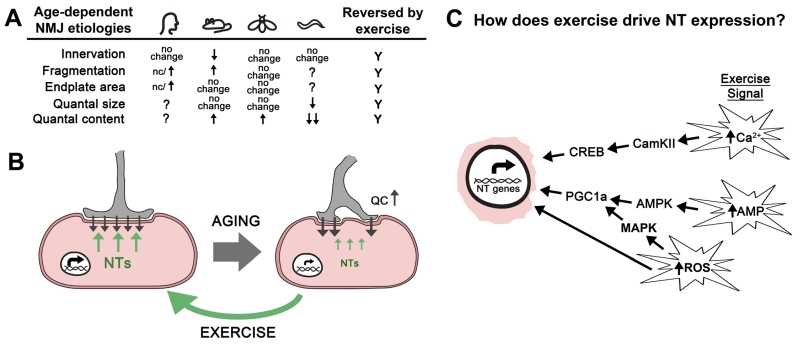Back to article: Rejuvenation of the aged neuromuscular junction by exercise
FIGURE 1: Exercise rejuvenates the neuromuscular junction by stimulating retrograde signaling. (A). Table contains the changes to the synaptic structure and function of the NMJ during aging from humans, mice, flies, and worms discussed in this review article. Inconsistent results about fragmentation at human NMJs are indicated. Exercise reverses all of these changes. (B) Aging results in reduced neurotrophin expression (NT; green arrows) leading to a loss of synaptic morphology and a compensatory increase in neurotransmitter release (quantal content = QC) at the neuromuscular junction (black arrows). Exercise increases the expression of multiple neurotrophin genes (NT genes; green arrows) resulting in improved structure and function of the neuromuscular junction. (C) Exercise results in increased cytosolic levels of calcium, reactive oxygen species (ROS), and an increase in the AMP:ATP and ADP:ATP ratios. We propose that these events initiate signaling cascades that result in the expression of neurotrophin (NT) genes via the activity of transcription factors such as CREB and PGC1a. It is expected that mechanical stress and oxidative stress help to modulate these signal transduction pathways. It’s also possible that the oxidation of DNA directly alters expression of NT genes.

